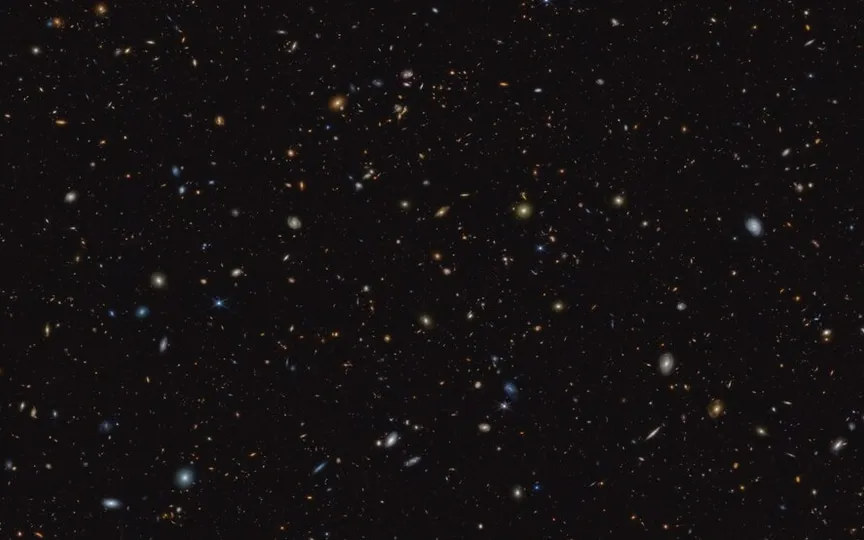45000 Galaxies Captured in Single Image by Webb Telescope – Unprecedented View of Universe
The JWST has played a crucial role in enhancing our comprehension of the origins of galaxies and stars. NASA has recently released an infrared image taken by Webb as a component of the JADES initiative, which has provided further insight into the immense scope of the cosmos.
This image focuses on an area of the sky known as the GOODS-South. Amazingly, this single image contains more than 45,000 galaxies, as reported by NASA. Researchers at the University of Texas at Austin conducted a study of galaxies that appeared between 500 and 850 million years after the Big Bang, also known as the era of reionization. During this era, the universe was covered in a gaseous haze that made it opaque.
About a billion years after the Big Bang, this nebula evaporated, making the universe transparent—a process known as reionization, which lends its name to this particular epoch. The puzzle is to understand how reionization happens.
One possible explanation is related to the existence of active supermassive black holes that contain young hot stars. The researchers used the NIRSpec (Near Infrared Spectrophotometer) Webb telescope to scan these galaxies for signs of star formation, making a remarkable discovery. Ryan Endsley of the University of Texas at Austin said, “Almost every galaxy we’ve found has very prominent emission lines that indicate recent, intense star formation. These early galaxies were great at producing massive, hot stars.”
These young, bright, massive stars emit abundant ultraviolet light that ionizes the surrounding gas atoms and strips electrons from their cores. This change from an opaque gas to a transparent gas is responsible for the reionization process.
The results of this study were presented at the 242nd meeting of the American Astronomical Society in Albuquerque, New Mexico, NASA announced.




